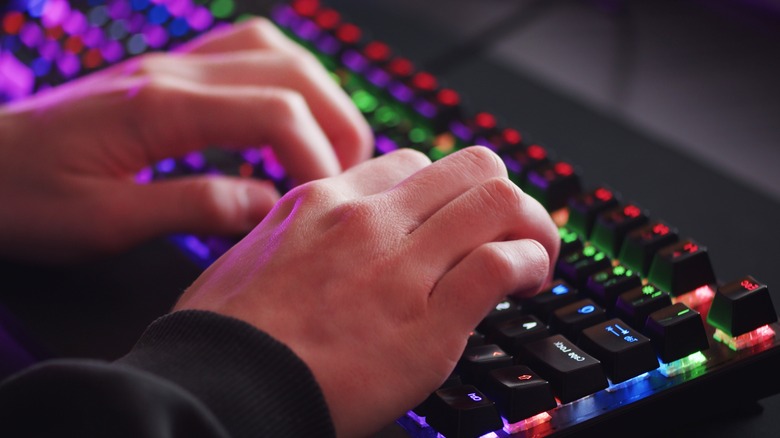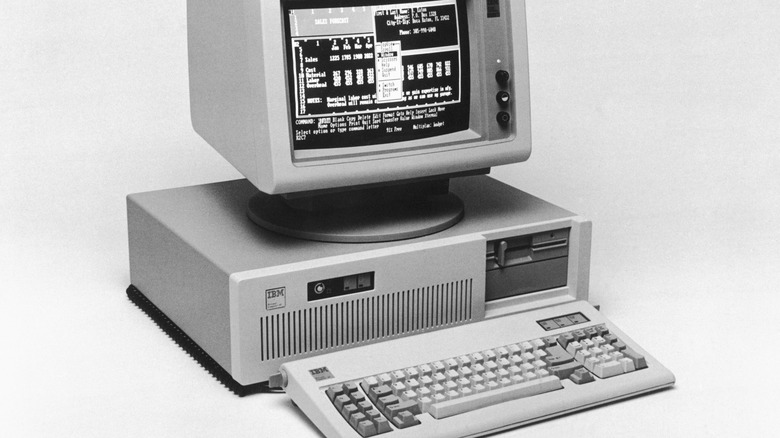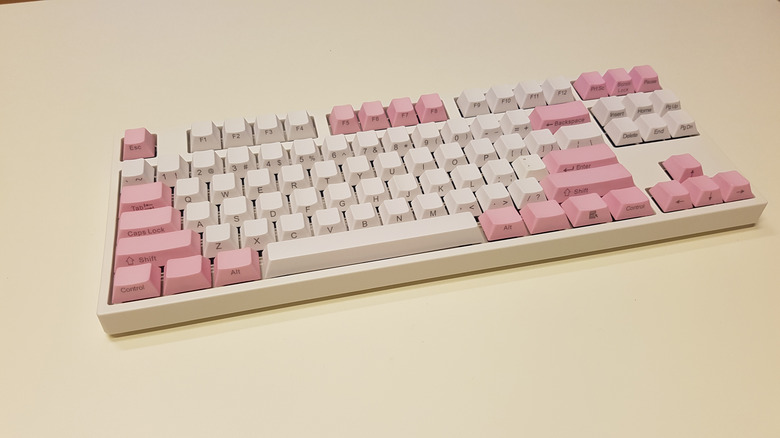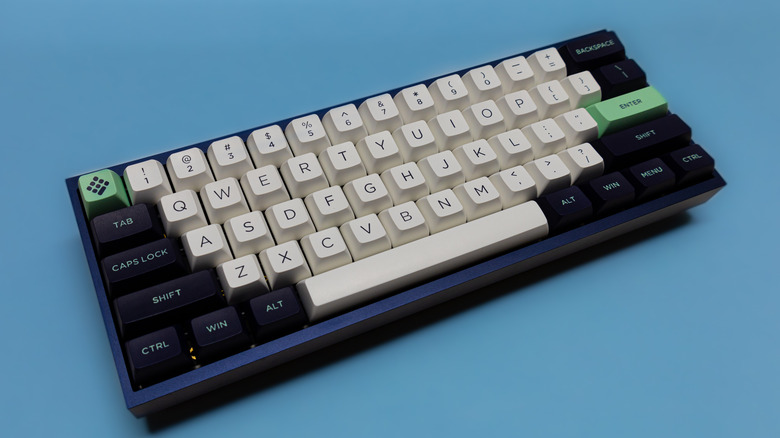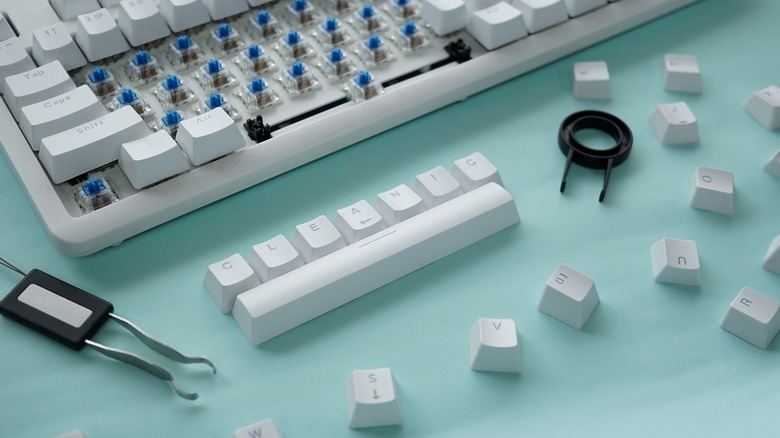Understanding Keyboard Sizes: The Best Fit For You And A Guide To Switch Types
For as long as personal computers have existed, keyboards have been the preferred means of man-to-machine interfacing. It may not be as grandiose as panel touch screens or motion sensors, but you just can't beat that consistent simplicity of a row of chunky keys and all the wondrous functions they bring with them. Keyboards have maintained their usual QWERTY layout for decades now, as uniformity helps to establish industry standards, but that doesn't mean that all keyboards are made equal.
In fact, modern keyboards come in all kinds of shapes and sizes to fit many different kinds of lifestyles. Larger keyboards offer greater functionality and control over your system, while smaller, simpler keyboards are more portable and take some of the guesswork out for newer users. If you've never bought a keyboard for yourself, the sheer variety can be a bit intimidating, but there are a handful of popular variants to help you narrow things down.
Keyboards at a glance
The differentiating factor between different types of keyboards is the number of keys present and, by extension, how large the keyboard is. Having more keys with additional functions necessitates a larger keyboard, but if you don't need all the bells and whistles, you can cut things down to size by a surprising amount.
To give a general overview, there are eight primary types of keyboard to choose from, in order of largest to smallest — full-sized, 1800 compact, tenkeyless, 75%, 65%, 60%, 40%, and number pads. Each subsequent size of keyboard cuts out a bit more of the fancy features, ditching built-in number pads and/or function keys and generally compressing everything into a single set of rows as much as possible.
At the absolute smallest, the entire alphabet is removed, leaving only a standalone number pad, which is meant more to be used as a supplement to an existing keyboard rather than on its own. Out of all of these variants, the most popular ones are full-sized, tenkeyless, and 60%.
Full-sized keyboards
A full-sized keyboard is the largest possible keyboard design, featuring a full set of alphabetical keys, function keys, and a number pad. This kind of keyboard is usually included as standard with most desktop computers and has been more or less the default format for many years. If you had a computer lab in your school growing up, the PCs probably used full-sized keyboards.
Full-sized keyboards are ideal for users who want the most possible control over their systems, with keys available for just about every possible function and utility, not to mention the convenience of a number pad when entering data or running calculations. If you're planning on doing in-depth work or intense gaming on your computer and plan to utilize shortcuts frequently, a full-sized keyboard is the keyboard for you. If you're more of a casual computer user, on the other hand, it may seem like a bit of a waste of desk real estate.
Tenkeyless keyboards
Tenkeyless keyboards, or "TKL" for short, are the epitome of the keyboard middle ground. TKL keyboards dump the number pad, leaving you with 87 keys for letters, numbers, and functions. This kind of keyboard has become more popular as computers have become more simplified and portable, particularly as manufacturers realize that the vast majority of users don't really use the number pad that much.
If you're looking to maintain the majority of control over your computer but need a little extra desk space, a TKL keyboard is a good compromise. For instance, if you need a working keyboard, but your line of work is more writing-heavy than number-heavy, a TKL will be just fine. As long as you don't mind entering numbers with the number key line instead of a number pad, then it's effectively the same as a full-sized keyboard, just narrower. The keys are all still fairly spaced out, so you don't need to worry too much about double-typing.
60% keyboards
They say that as time passes, the world gets smaller, and the rise of 60% keyboards is a good indication of that. The "60%" refers to the fact that the keyboard is only 60% of the size of a full-sized keyboard. A 60% keyboard ditches not just the number pad but all of the function keys, including the F line, the arrow keys, and the rest. This leaves you with a keyboard with only letters, numbers, and the bedrock necessities like a return key, backspace, spacebar, and so on.
A 60% keyboard is about as small as a keyboard can realistically get while still doing all the things a keyboard needs to do, i.e., typing letters and numbers. This kind of keyboard is best for those who don't need to do anything too strenuous on their computers, such as writing simple emails or blogging. Since they cut out all the fancy stuff, 60% keyboards are also pretty cheap, with simple ones retailing for around $30 to $40 on Amazon. The only obvious drawback is that they may be a bit too small for some hands, resulting in more frequent double-typing.
Keyboard switch types
In addition to the actual layout of a keyboard, you should also be aware of the specifics of the actual buttons beneath the keys or the "switches" if you want to use the technical parlance. You might assume that keys are just keys and there's no difference between them, but in actuality, there are three distinct types of keyboard switches.
First are linear switches, which are soft enough that you don't feel a bump when you press them and produce no audible clicking sounds. These kinds of switches are light and smooth, making them great for crowded offices where you're trying to work without bothering everyone. The lack of feedback may feel weird to some typists, though.
Second are tactile switches, which produce physical feedback when pressed. For some, it's a little easier to touch type when you can physically feel the key depressing under your fingers. It's for these folks that tactile switches are the best, as they're tangible without being noisy.
Last are clicky switches, which provide both physical and audible feedback when pressed. This is the oldest type of keyboard switch and is the default in most cheap models. Clicky switches are more a matter of preference than anything else; some people find them annoying, while others find the clicking sounds satisfying.
